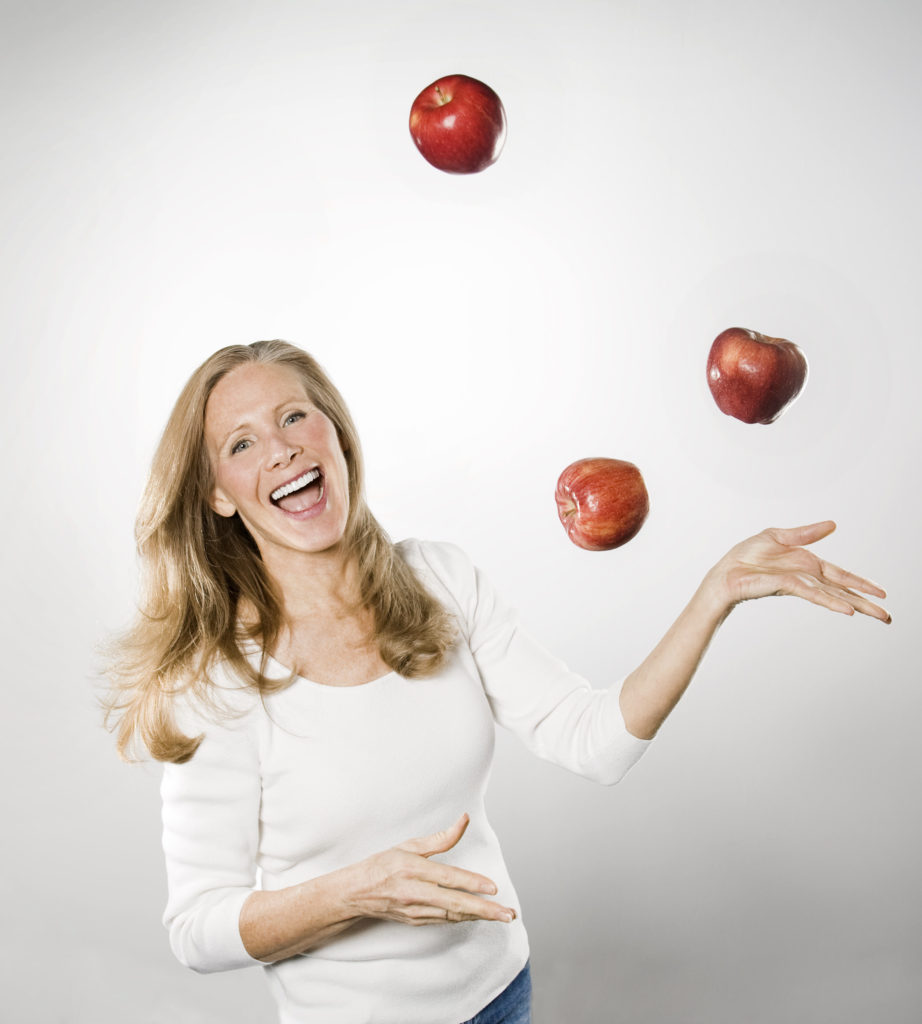Now is the time to say adios to summer and the abundant summer crops and welcome the fall harvest. Eating seasonally is both economical and healthy. The seasonal bounty of fall fruits and vegetables has great variety from root and vine grown vegetables to fruits of the tree. Apples are one of these fruits and are delicious when they are fresh off the tree. The apple is the perfect snack: easy, portable, energy boosting, delicious, and fat free!
When the early English colonists arrived in North America, the only apple tree they found was crab apple. However, there are now over 7,000 varieties growing in the US. The colonists brought many seeds and seedlings with them over the years, but the first apple trees the colonists brought didn’t bear much fruit, because there were no honeybees in North America. The colonists started bringing over hives of honeybees as early as 1622 to pollinate the trees.
A New York Publication in 1670 stated: “You shall scarce see a house, but the South side is begirt with Hives of Bees. The Native Americans loved the new apples that the colonists brought with them and cultivated them extensively throughout the US.
The apple is one of the most nutritious foods with remedies dating back to the earliest times of history. The apple is a member of the rose family and the blossom looks very much like a wild rose. One medium apple, fresh, raw, and with the skin, has high levels of vitamin C, potassium, iron, calcium, phosphorus, vitamin A, boron, and folate. All of those nutrients are packed into a small fruit with only 81 calories. Boron is a trace element, which has been shown to strengthen bones.
Pectin is a soluble fiber in apples which removes cholesterol, toxic metals such as lead and mercury, and the residues of radiation. In addition, the fiber content of one apple is equivalent to a serving of bran cereal. The malic and tartaric acid found in apples inhibits growth of disease-producing bacteria in the intestinal tract.
The American Cancer Association says that the apple is a lung strengthening food and can lower the incidence of lung cancer, while studies have also shown that the liver and gallbladder benefit from the cleansing properties of the apple and apple juice. Furthermore, the antioxidant phytonutrients found in apples helps fight the damaging effects of LDL, which we know as bad cholesterol.
The physical benefits of apples have also been noted. A poultice of grated apples placed over the eyes for up to 20 to 30 minutes can help with swelling, sunburn, and “pink eye.”
This simple recipe is much like the Waldorf Salad recipe I learned from my mother. This recipe makes a great light lunch to pack for school or work.
Recipe
Apple Salad
Salad Ingredients:
3 large red apples cored and cut into bite size pieces.
2/3-cup pineapple (fresh is the best choice) crushed or cut into cubes.
1/ 3 cup celery, diced
3 Tablespoons Raisins
3 Tablespoon pecan pieces
Dressing Ingredients:
3 Tablespoons plain yogurt
2 teaspoon mayonnaise
1 Tablespoon pineapple juice
1/8 teaspoon cinnamon
Directions:
In a medium bowl, combine the salad ingredients.
In a small bowl mix together the dressing ingredients and then mix the dressing in with the fruit.
Variations I add grapes to this salad when available. Walnuts can be used instead of pecans.
For more information go to: www.organichealthylifestyle.com
You may like to see Nancy’s international award-winning cookbooks on her author page on Amazon.
copyright@nancyaddison2012.


